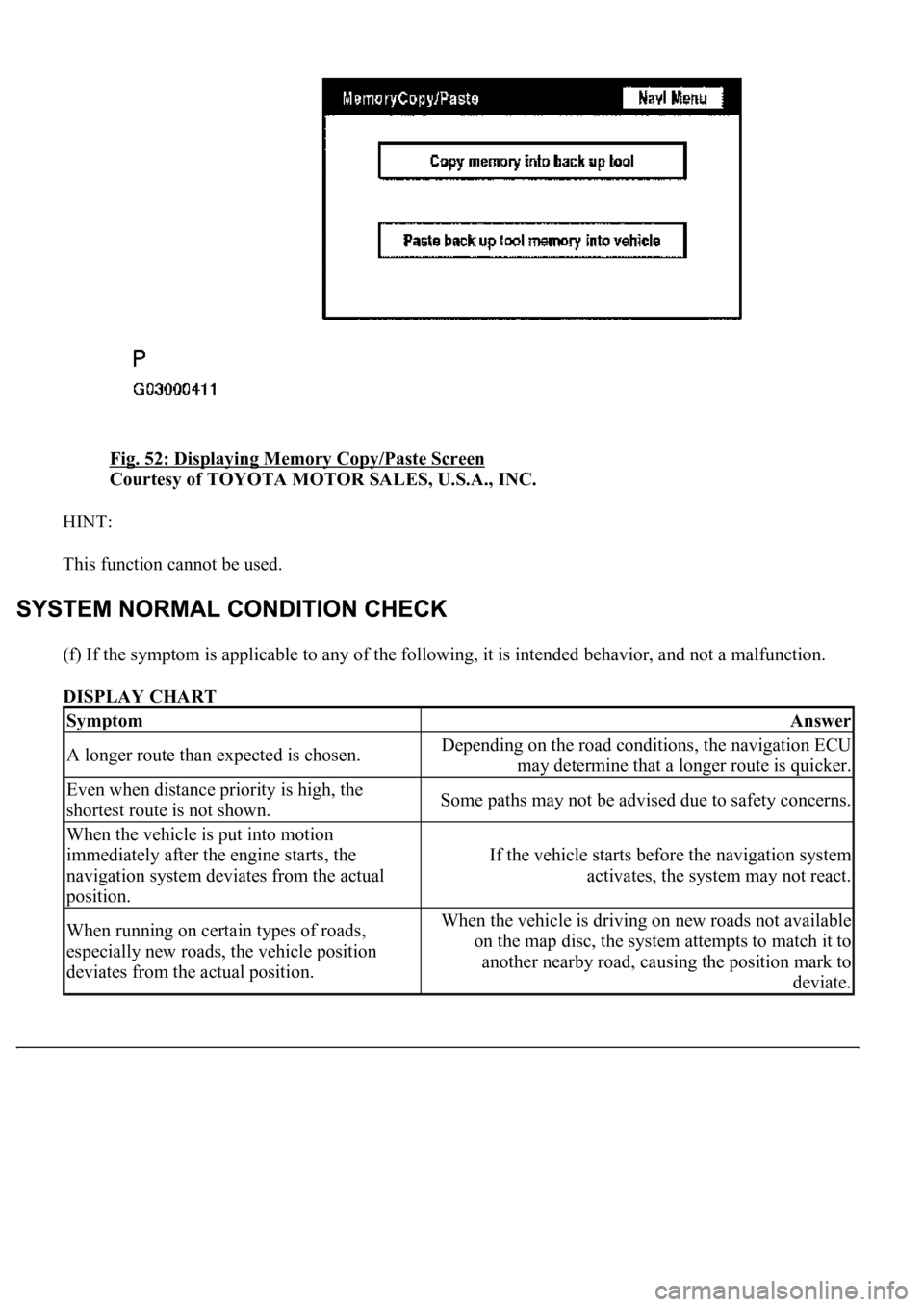Page 4451 of 4500

repair or replace problem parts (see AVC-LAN CIRCUIT (NAVIGATION ECU -STEREO
COMPONENT TUNER) - AVC-LAN CIRCUIT (NAVIGATION ECU - TELEVISION
CAMERA ECU) ).
Even if the malfunction symptom is not confirmed, check the diagnostic trouble codes. This is
because the system stores past diagnostic trouble codes.
Refer to the detailed description on the diagnostic screen, as necessary (see DIAGNOSIS
DISPLAY DETAILED DESCRIPTION ).
Check and clear the past diagnostic trouble code. Check the diagnostic trouble code and inspect the
area the code indicates.
A code is output (go to step 5)
A code is not output (go to step 6)
5.(see DIAGNOSTIC TROUBLE CODE CHART
)
Find the output code on the diagnostic trouble code chart.
Output the diagnostic trouble code (go to step 8)
6.(see PROBLEM SYMPTOMS TABLE
)
Find the applicable symptom code in the problem symptoms table.
HINT:
If the symptom does not recur and no code is output, perform the symptom reproduction method (see
HOW TO PROCEED WITH TROUBLESHOOTING
).
There is an applicable symptom code in the table (go to step 8)
There is no applicable symptom code in the table (go to step 7)
7.Check the ECU terminal arrangement based on the malfunction symptom (see TERMINALS OF
ECU )
8.Check the circuit
Adjust, repair or replace as necessary.
9.Recheck the DIAGNOSTIC TROUBLE CODE CHART
HINT:
After deleting the DTC, recheck the diagnostic trouble code.
10.Perform confirmation test
Page 4473 of 4500
Fig. 33: Displaying Screen Color Bar
Courtesy of TOYOTA MOTOR SALES, U.S.A., INC.
4.Check each color of the color bar when the "NAVI Color Bar Check" screen is displayed.
HINT:
Colors will not be displayed full-screen as in "Display Check Mode".
HINT:
This mode displays product information on the navigation systems and discs.
Illustrations may differ from the actual vehicle depending on the device settings and options. Therefore,
some detailed areas may not be shown exactly the same as on the actual vehicle.
1.Enter diagnostic mode (see DIAGNOSTIC START
-UP/FINISH ).
Page 4491 of 4500

Fig. 52: Displaying Memory Copy/Paste Screen
Courtesy of TOYOTA MOTOR SALES, U.S.A., INC.
HINT:
This function cannot be used.
(f) If the symptom is applicable to any of the following, it is intended behavior, and not a malfunction.
DISPLAY CHART
SymptomAnswer
A longer route than expected is chosen.Depending on the road conditions, the navigation ECU
may determine that a longer route is quicker.
Even when distance priority is high, the
shortest route is not shown.Some paths may not be advised due to safety concerns.
When the vehicle is put into motion
immediately after the engine starts, the
navigation system deviates from the actual
position.
If the vehicle starts before the navigation system
activates, the system may not react.
When running on certain types of roads,
especially new roads, the vehicle position
deviates from the actual position.When the vehicle is driving on new roads not available
on the map disc, the system attempts to match it to
another nearby road, causing the position mark to
deviate.
Page 4492 of 4500
Fig. 53: Identifying System Normal Condition
Courtesy of TOYOTA MOTOR SALES, U.S.A., INC.
(g) The following symptoms are not a malfunction, but are caused by errors inherent in the GPS, gyro
sensor, speed sensor, and navigation ECU.
1. The current position mark may be displayed on a nearby parallel road the vehicle actually runs on.